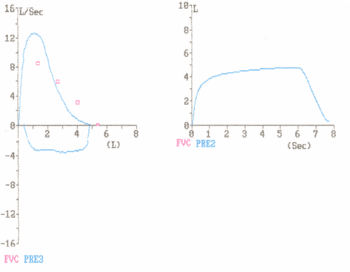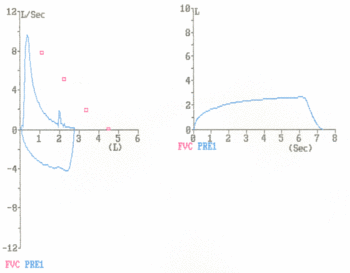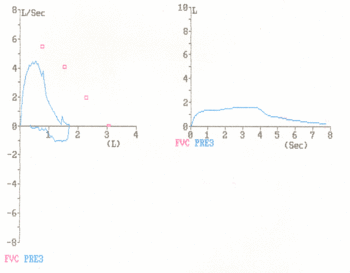Pulmonary function test: Difference between revisions
Jump to navigation
Jump to search

imported>Robert Badgett No edit summary |
imported>Howard C. Berkowitz No edit summary |
||
| Line 1: | Line 1: | ||
{{subpages}} | |||
In [[medicine]], '''pulmonary function tests''', also called '''respiratory function tests''', are "measurement of the various processes involved in the act of respiration: inspiration, expiration, oxygen and carbon dioxide exchange, lung volume and compliance, etc.<ref>{{MeSH}}</ref> | In [[medicine]], '''pulmonary function tests''', also called '''respiratory function tests''', are "measurement of the various processes involved in the act of respiration: inspiration, expiration, oxygen and carbon dioxide exchange, lung volume and compliance, etc.<ref>{{MeSH}}</ref> | ||
| Line 12: | Line 13: | ||
* [[Spirometry]] | * [[Spirometry]] | ||
While precise measurements of these parameters take specialized equipment, often requiring considerable operator skill, it is worth noting that inexpensive peak flow meters are a vital part of patient self-management of asthma and several other respiratory diseases. | |||
==References== | ==References== | ||
<references/> | <references/> | ||
Revision as of 13:04, 6 June 2010
In medicine, pulmonary function tests, also called respiratory function tests, are "measurement of the various processes involved in the act of respiration: inspiration, expiration, oxygen and carbon dioxide exchange, lung volume and compliance, etc.[1]
Pulmonary function tests include:
While precise measurements of these parameters take specialized equipment, often requiring considerable operator skill, it is worth noting that inexpensive peak flow meters are a vital part of patient self-management of asthma and several other respiratory diseases.
References
- ↑ Anonymous (2025), Pulmonary function test (English). Medical Subject Headings. U.S. National Library of Medicine.


